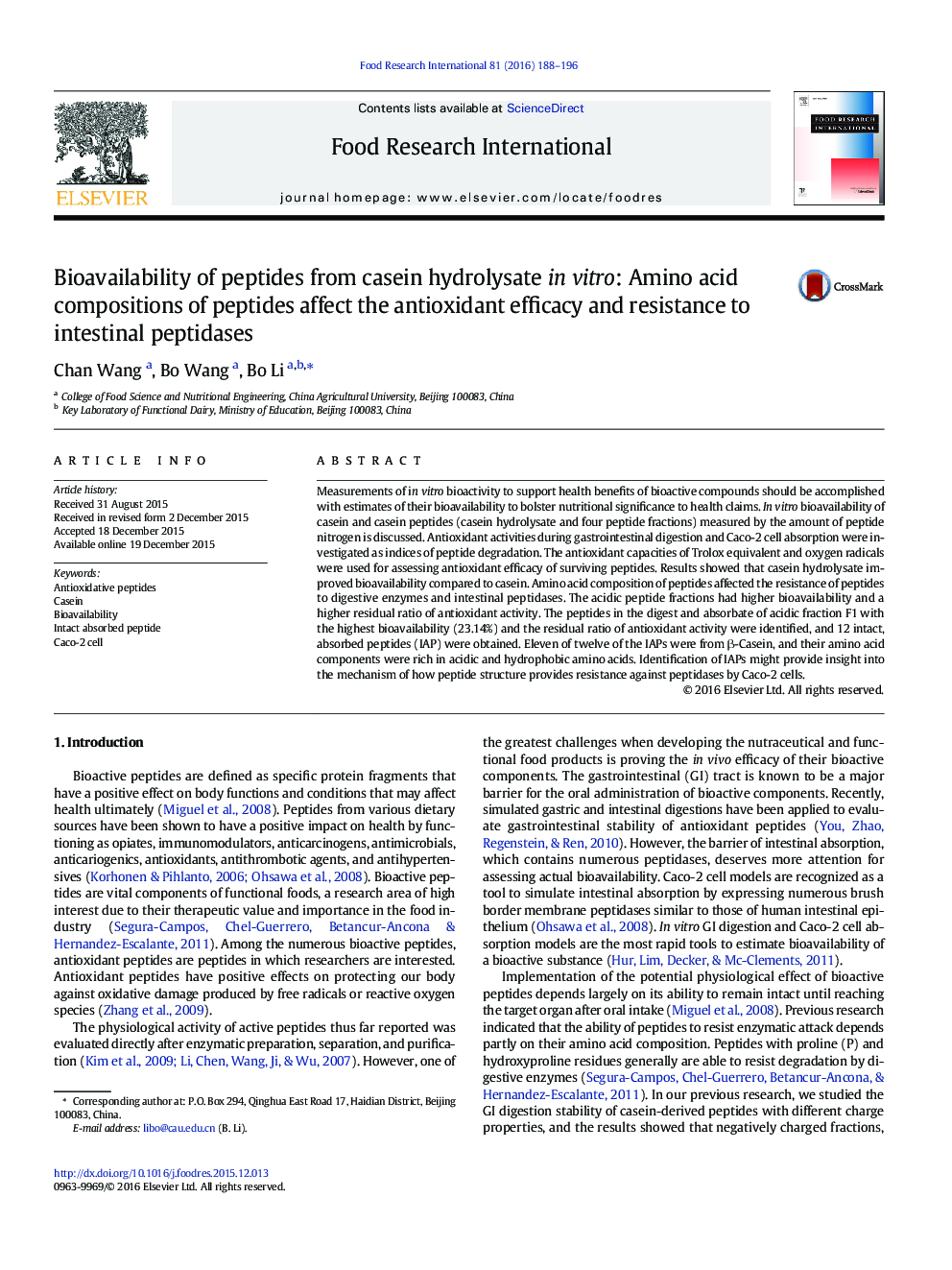| Article ID | Journal | Published Year | Pages | File Type |
|---|---|---|---|---|
| 4561260 | Food Research International | 2016 | 9 Pages |
•Casein hydrolysate significantly improved bioavailability compared to casein.•Amino acid composition of peptides affected the resistance to intestinal peptidases.•Acidic peptide fractions had higher bioavailability and residual antioxidant activity.•Twelve intact-absorbed peptides (IAP) were identified.•The amino acid residues at the N-terminus of IAP are Pro, Val and Thr.
Measurements of in vitro bioactivity to support health benefits of bioactive compounds should be accomplished with estimates of their bioavailability to bolster nutritional significance to health claims. In vitro bioavailability of casein and casein peptides (casein hydrolysate and four peptide fractions) measured by the amount of peptide nitrogen is discussed. Antioxidant activities during gastrointestinal digestion and Caco-2 cell absorption were investigated as indices of peptide degradation. The antioxidant capacities of Trolox equivalent and oxygen radicals were used for assessing antioxidant efficacy of surviving peptides. Results showed that casein hydrolysate improved bioavailability compared to casein. Amino acid composition of peptides affected the resistance of peptides to digestive enzymes and intestinal peptidases. The acidic peptide fractions had higher bioavailability and a higher residual ratio of antioxidant activity. The peptides in the digest and absorbate of acidic fraction F1 with the highest bioavailability (23.14%) and the residual ratio of antioxidant activity were identified, and 12 intact, absorbed peptides (IAP) were obtained. Eleven of twelve of the IAPs were from β-Casein, and their amino acid components were rich in acidic and hydrophobic amino acids. Identification of IAPs might provide insight into the mechanism of how peptide structure provides resistance against peptidases by Caco-2 cells.
